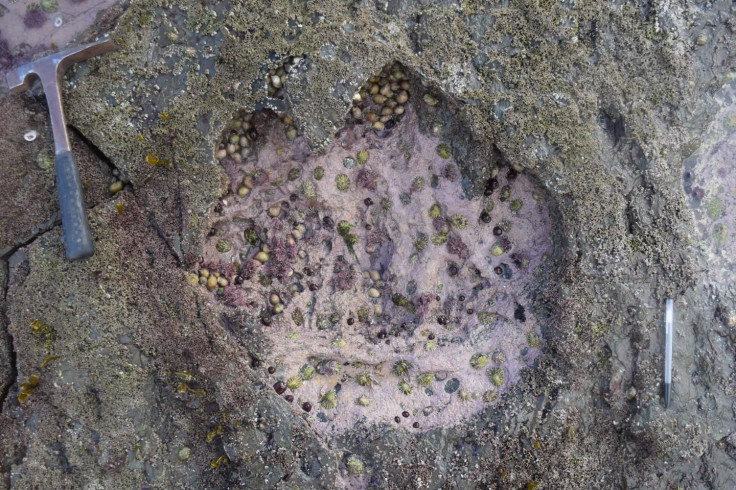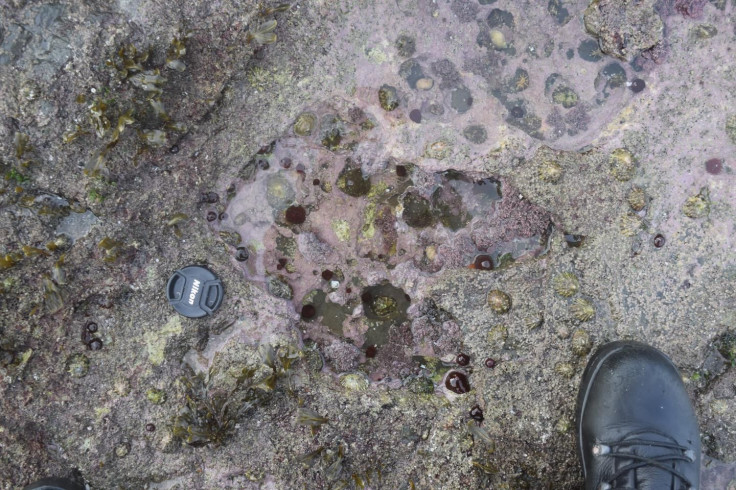Massive 170-Million-Year-Old Dinosaur Footprints Uncovered On Scottish Island

An international team of researchers exploring a Scottish island have uncovered a paleontological haven, a site hosting several of dinosaur footprints dating back to the hardly studied Middle Jurassic era.
Though the massive marks found on the north-east coast of Scotland's Isle of Skye look like tidal pools, scientists scouring the area were soon able to figure out that they belonged to animals that roamed Earth some 170-million-years ago.
They found some 50 footprints in all — some making up a couple of trackways, others isolated — and mapped the entire site in 3D to conduct a detailed analysis. Initially, it was difficult to measure and photograph the impressions due to their peculiar location. High tides flooded the tracks and changed the landscape of the site on a constant basis, but drone-integrated cameras and other modern tech helped them photograph and model the prints.
On studying the shape of the tracks, orientation of the toes, and size of claws, the team established the prints belonged to two animals from the Middle Jurassic era (164 to 174 million years ago) — long-necked Sauropods that stood nearly 7-feet tall and rare three-toed theropods which were just as big and the older cousin of the much famous Tyrannosaurus rex aka T. rex.
According to the group, the dinosaurs might have left these prints in what was then a muddy, shallow lagoon of a much warmer Scotland. They also think this particular region could have been frequented by the animals during the Middle Jurassic or the time when dinosaurs started moving into different parts of the globe.
Scientists believe knowing more about Middle Jurassic could provide critical insights into the evolution of first birds and dinosaurs, but not many fossils from the era have been revealed till date. However, this discovery, made by researchers from the University of Edinburgh, Staffin Museum and Chinese Academy of Sciences, has the potential to change that.
"This tracksite is the second discovery of sauropod footprints on Skye. It was found in rocks that were slightly older than those previously found at Duntulm on the island and demonstrates the presence of sauropods in this part of the world through a longer timescale than previously known," lead study author Paige dePolo said in a statement. “This site is a useful building block for us to continue fleshing out a picture of what dinosaurs were like on Skye in the Middle Jurassic."
The work, funded by the National Geographic Society, Association of Women Geologists Derek and Maureen Moss, Edinburgh Zoo and Edinburgh Geological Society, was detailed in a paper published in the Scottish Journal of Geology.

© Copyright IBTimes 2024. All rights reserved.





















